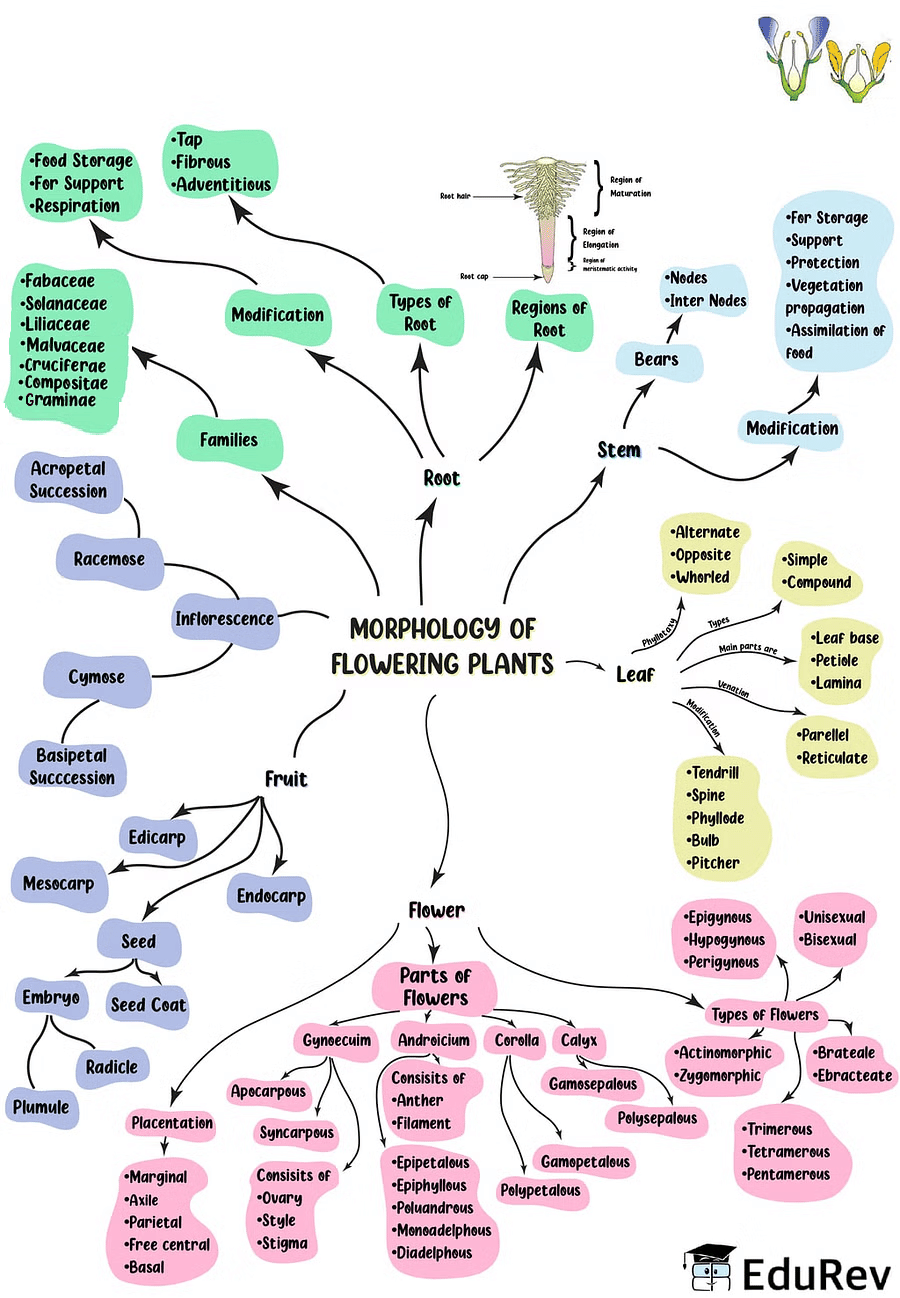NEET Exam > NEET Notes > Biology Class 11 > Mind Map: Morphology of Flowering Plants
Mind Map: Morphology of Flowering Plants | Biology Class 11 - NEET PDF Download

The document Mind Map: Morphology of Flowering Plants | Biology Class 11 - NEET is a part of the NEET Course Biology Class 11.
All you need of NEET at this link: NEET
|
150 videos|398 docs|136 tests
|
FAQs on Mind Map: Morphology of Flowering Plants - Biology Class 11 - NEET
| 1. What is the morphology of flowering plants? |  |
Ans. The morphology of flowering plants refers to their external structure and form, including the arrangement of leaves, stems, roots, and flowers. It involves the study of their shape, size, color, and other physical characteristics.
| 2. How do flowers contribute to the morphology of flowering plants? |  |
Ans. Flowers are the reproductive structures of flowering plants and play a crucial role in their morphology. They are responsible for attracting pollinators, producing seeds, and ultimately ensuring the continuation of the plant species.
| 3. What are the main parts of a flower and their functions? |  |
Ans. A flower typically consists of several main parts, including the petals, sepals, stamens, and pistil. The petals attract pollinators, the sepals protect the developing bud, the stamens produce pollen, and the pistil contains the ovary where fertilization takes place.
| 4. How do the leaves contribute to the morphology of flowering plants? |  |
Ans. Leaves are important structures in the morphology of flowering plants. They are responsible for photosynthesis, where they convert sunlight into energy for the plant. Leaves also help regulate water loss through tiny openings called stomata and provide support for the plant by capturing sunlight.
| 5. What is the role of stems in the morphology of flowering plants? |  |
Ans. Stems are vital components of the morphology of flowering plants. They provide support for the plant, allowing it to grow vertically. Stems also transport water, nutrients, and sugars between the roots and leaves. Additionally, stems can store food and water, enabling the plant to survive in adverse conditions.
Related Searches






















